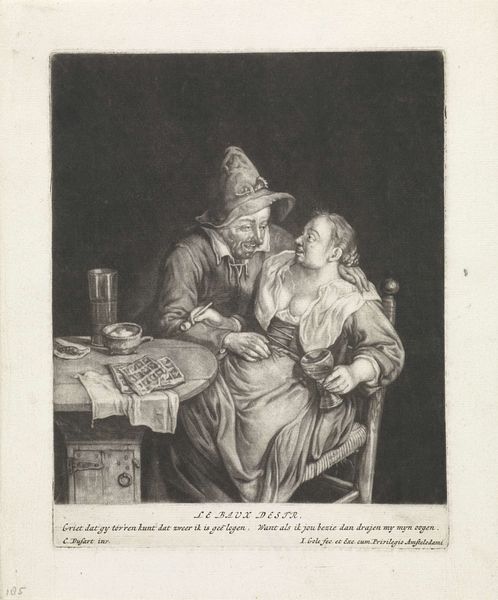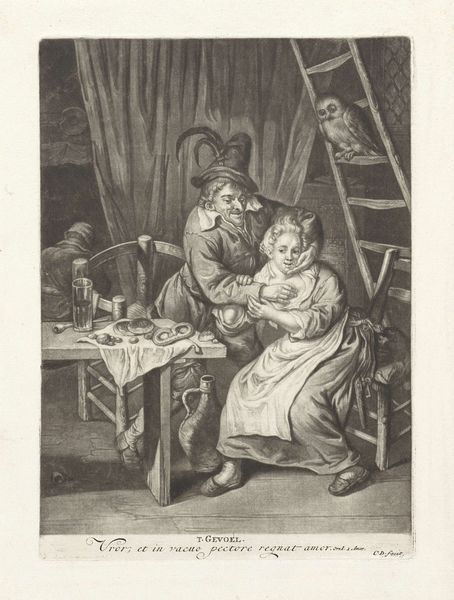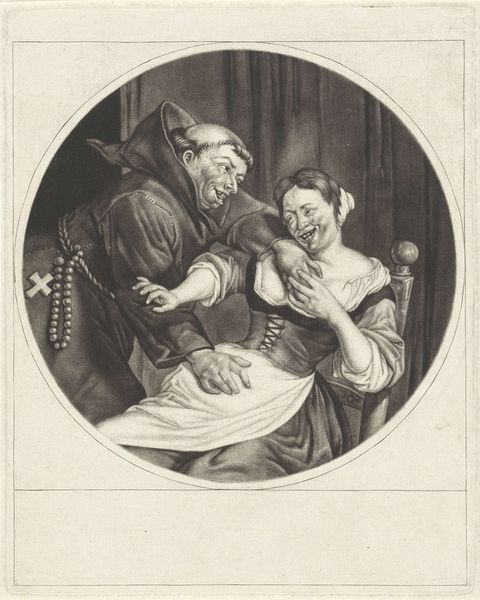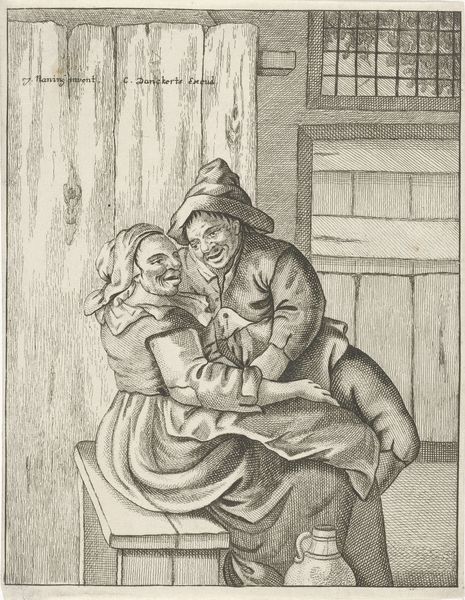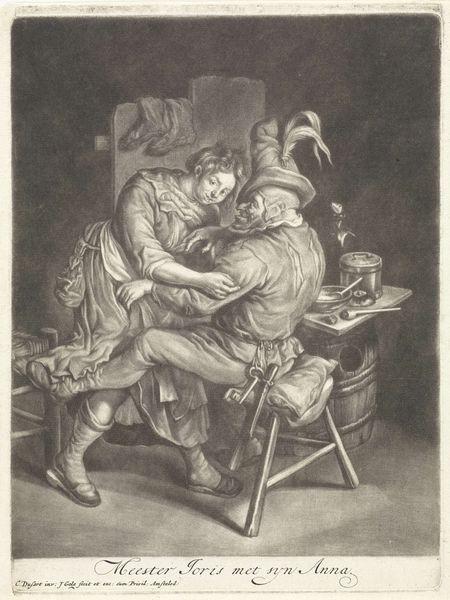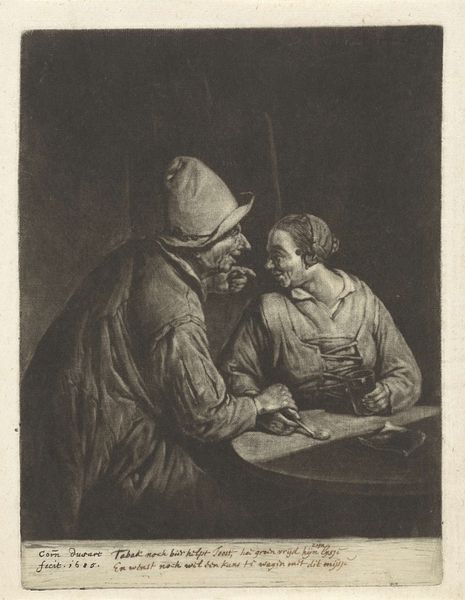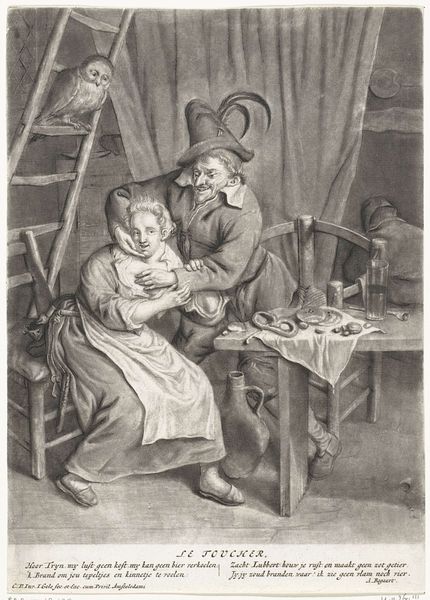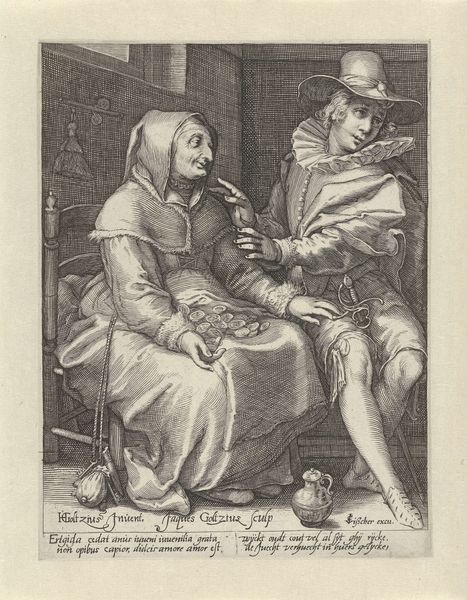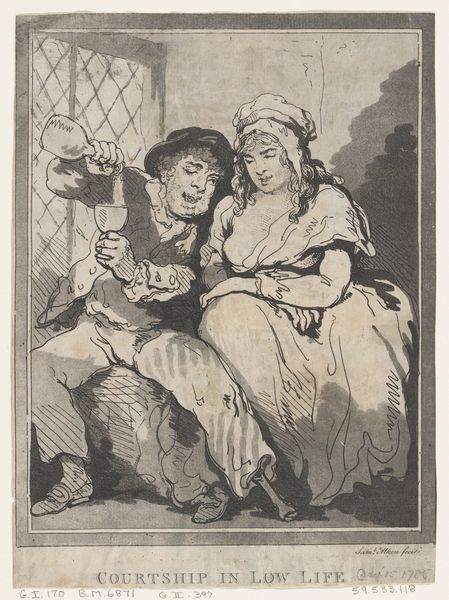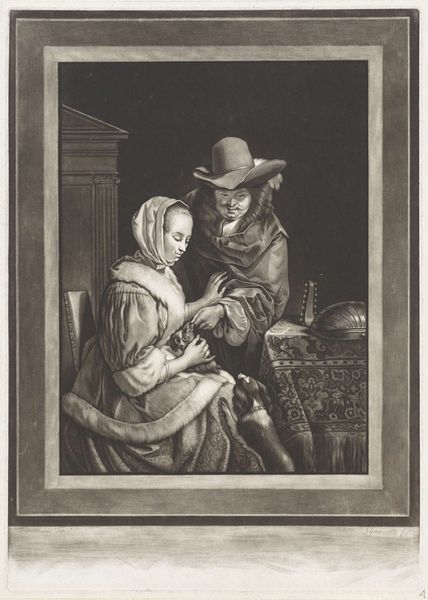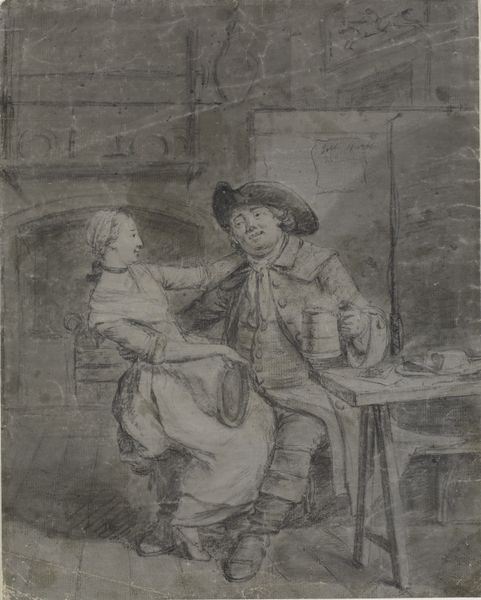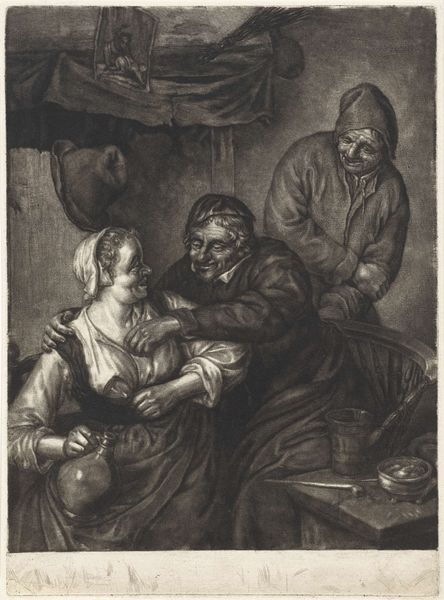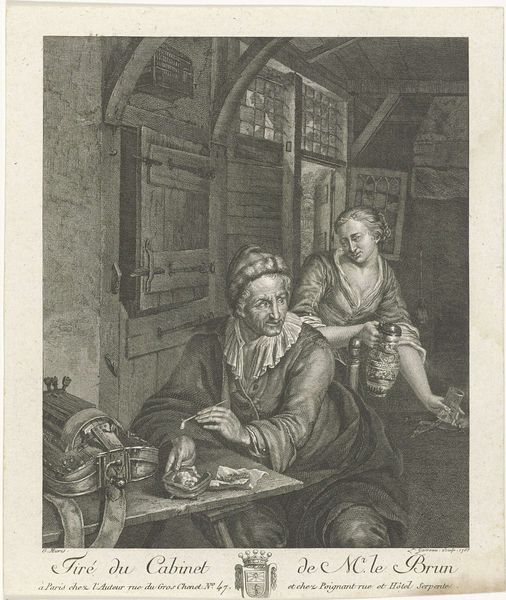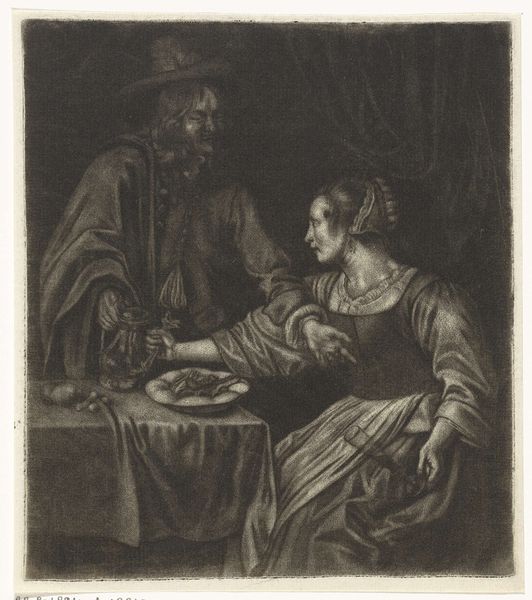
drawing, charcoal
#
portrait
#
drawing
#
dutch-golden-age
#
charcoal drawing
#
charcoal art
#
intimism
#
portrait drawing
#
genre-painting
#
charcoal
Dimensions: height 181 mm, width 150 mm
Copyright: Rijks Museum: Open Domain
Curator: Before us, we have Cornelis Dusart's drawing "Liefdespaar," created between 1670 and 1704. Dusart, an artist from the Dutch Golden Age, worked in charcoal for this drawing, which can be seen here at the Rijksmuseum. Editor: Intimate, almost a whisper of a scene. I'm immediately drawn to the contrasting textures achieved with charcoal; the rough hatchings create form against the almost velvety dark background. It evokes a strong sense of light. Curator: The choice of charcoal, I think, adds a layer of symbolism. Consider the transience of charcoal itself – burnt wood, a relic of something consumed by fire. It resonates with the fleeting nature of such encounters, the blurred lines between genuine affection and ephemeral desire. Editor: Absolutely, the very materiality contributes to this reading. The composition itself—the slightly tilted table, the overlapping figures—creates visual instability. There’s a palpable tension. Is this intimacy or is it something more transactional? Curator: That's the ambiguity Dusart excels at! Their expressions… the man with his pipe, seemingly offering something, and the woman with the chalice, perhaps weighing her options. There is a ritual quality here – the pipe and drink acting as symbolic gestures within the dance of courtship or negotiation. Editor: Yes, a symbolic exchange. Also, look at the detailed rendering of fabrics, particularly the woman’s dress versus the man's rustic garb. Semiotically, it reinforces social stratification even within this seemingly private moment. Curator: And consider the waffle pattern so carefully rendered. Food, drink, touch, gaze… each plays a part in the performance. Even the seemingly innocuous detail of the tabletop props is fraught with symbolism—suggesting themes of hospitality, enticement, and perhaps even bargaining. Editor: It almost reads like a stage, doesn't it? Framed by the dark backdrop, with props carefully placed for maximum narrative impact. I appreciate how Dusart transforms what could be a simple genre scene into a complex interplay of forms, textures, and underlying social dynamics. Curator: It encourages us to contemplate the complexities within such encounters. Perhaps the title is meant to be ironic, given the underlying sense of social performativity on display here. Editor: I concur. This artwork teaches us that love and human relationships are always bound in semiotic codes waiting to be interpreted.
Comments
No comments
Be the first to comment and join the conversation on the ultimate creative platform.
